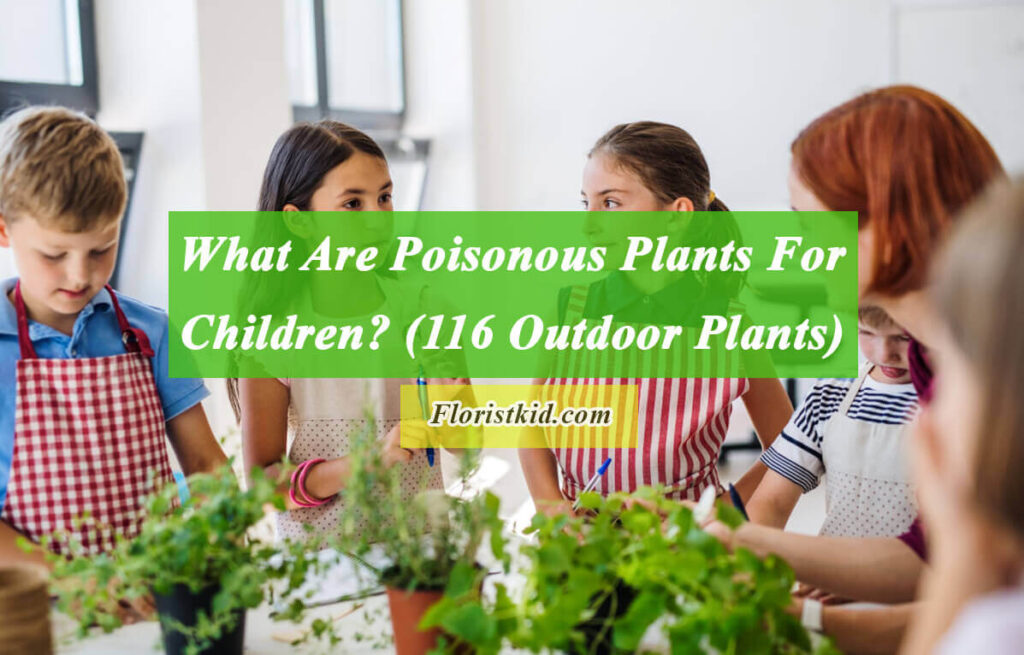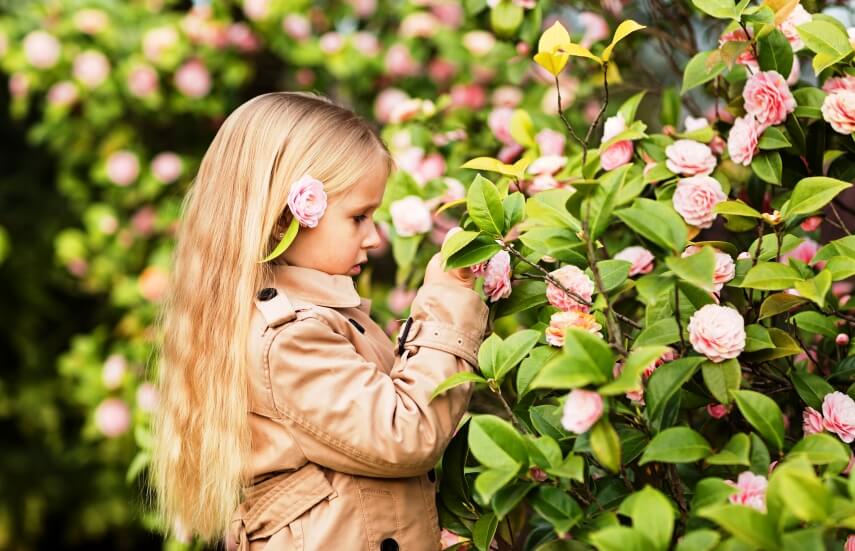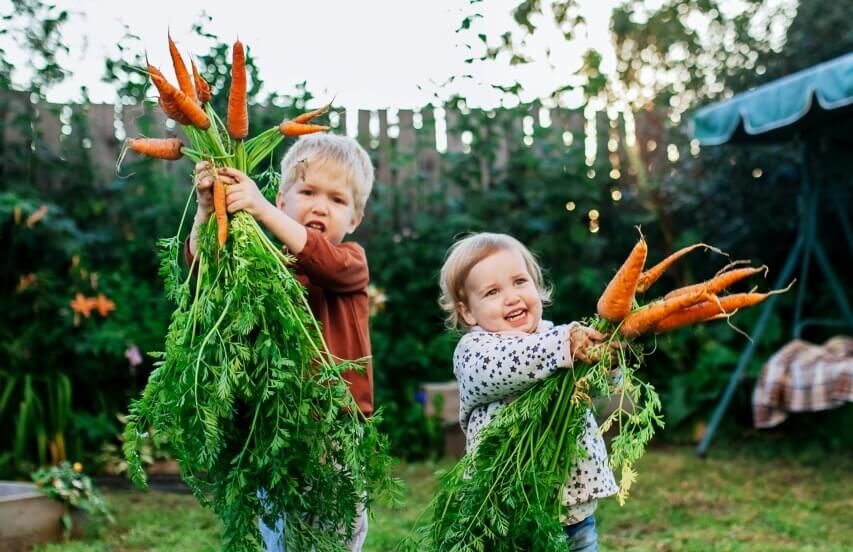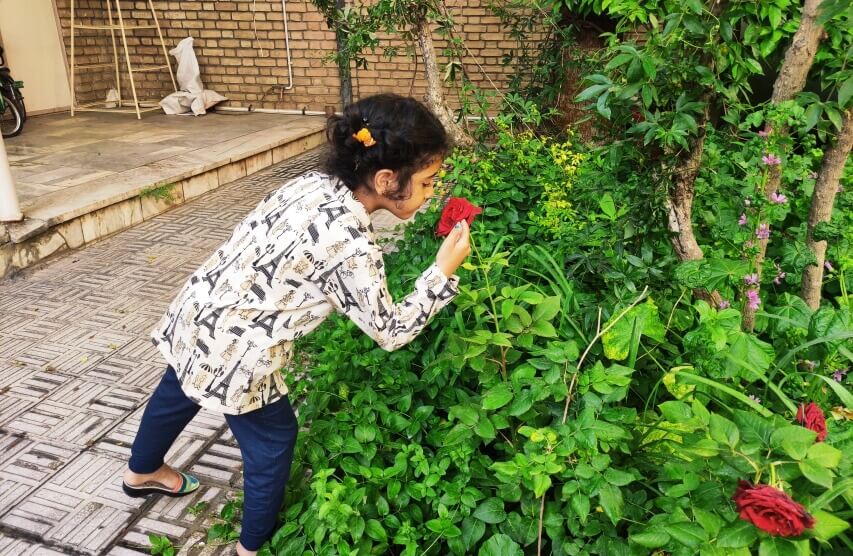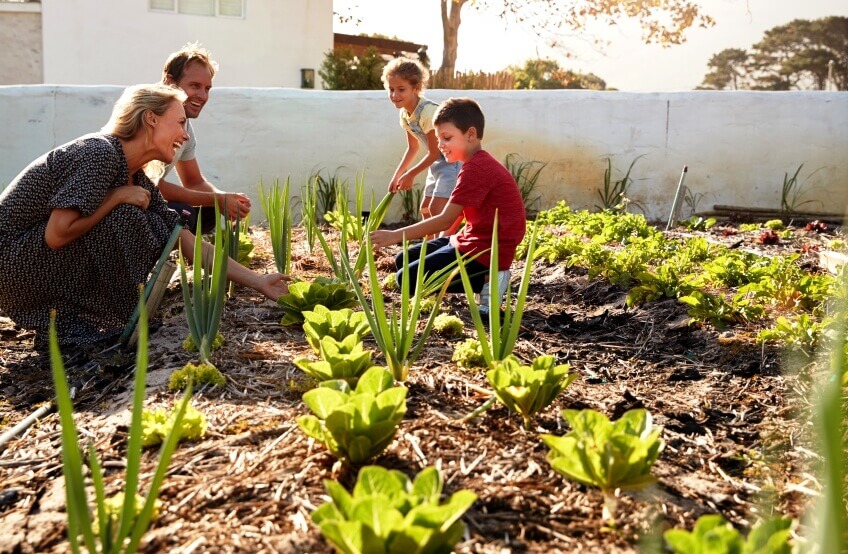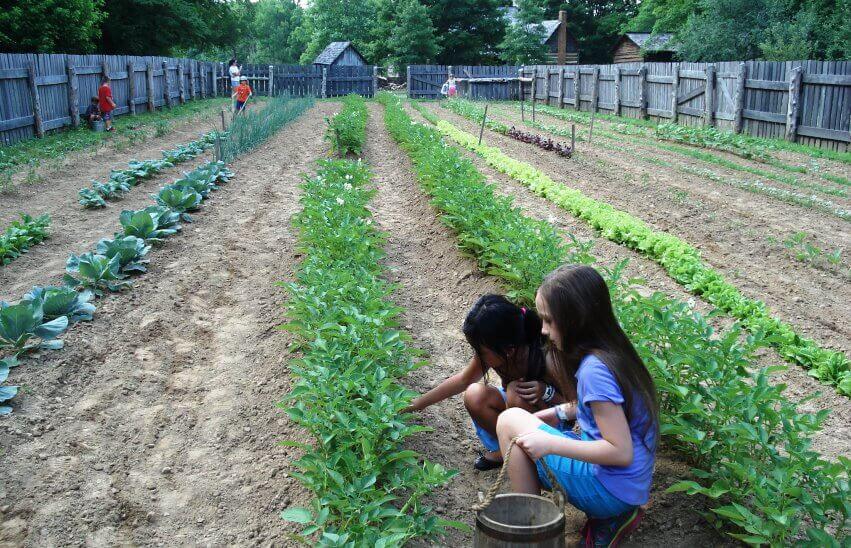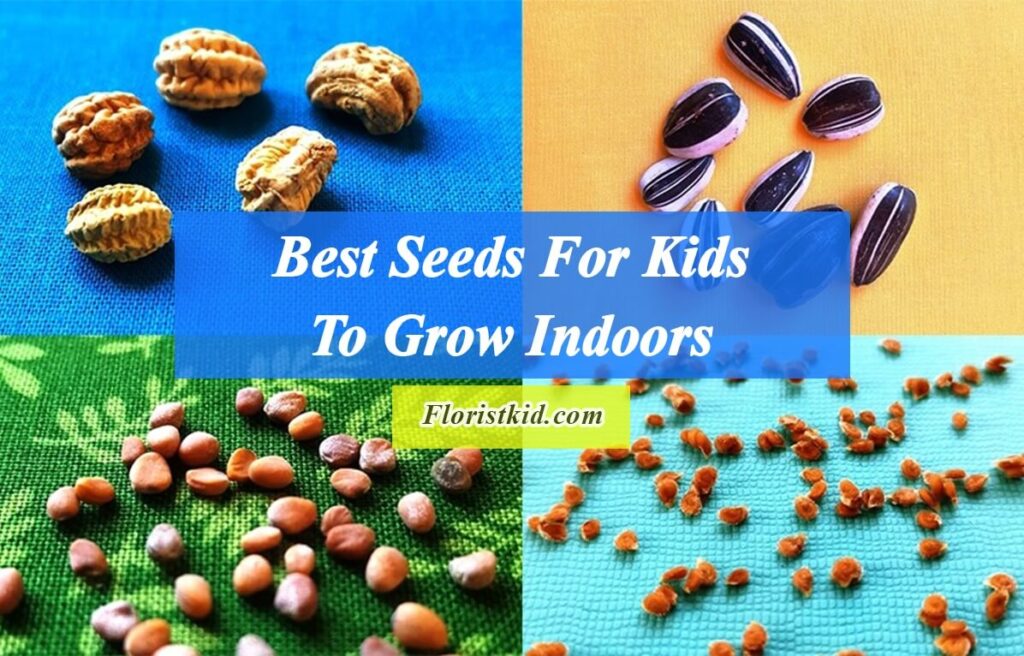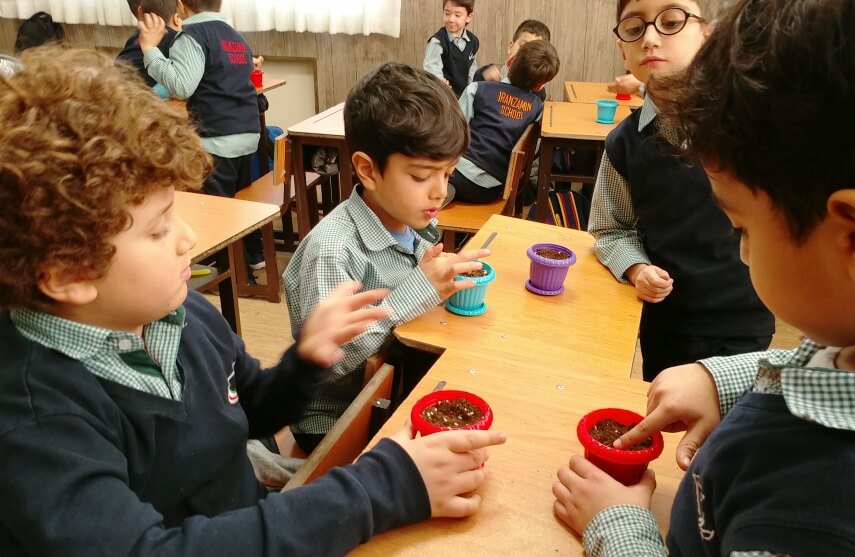Most plants are helpful and completely safe for children’s play spaces. However, there are several naturally occurring poisons in the plant world, some of which are highly concentrated in certain plant species. As a result, to ensure garden safety for kids, it is crucial to learn about poisonous plants for children.
Due to the importance of this subject, the effects of poisonous plants on children will be discussed in this article, along with a list of 116 poisonous outdoor plants that should be avoided in gardens and play places with kids.
If you are interested in this topic, you can also read
<<Gardening With Toddlers>> and <<Kid-freindly indoor Plants >> articles.
About Poisonous plants
There are numerous poisonous plants, both outdoors and indoors. Some of these plants can be harmful to people if consumed, while others can lead to allergic reactions like dermatitis. For instance, it could be deadly if a young infant chews and swallows one or two castor bean plant (Ricinus communis) seeds.
Depending on the species, poisons may be found throughout various plant parts or may be concentrated in one part. That is why it is possible to eat the harmless petioles of rhubarb (Rheum rhabarbarum) but not the poisonous leaf blades.
Similarly, some plant components that are lethal when raw or unripe become edible when cooked or ripened. For instance, cooking removes the toxicity present in some varieties of cassava roots (Manihot).
Taro leaves (Elephant ear leaves) are yet another example. Uncooked taro leaves are poisonous and unsafe for humans to eat. The reason is that oxalate is present in high concentrations in taro leaves.
Cooking can deactivate the harmful oxalates in these leaves; therefore, cooking taro leaves before eating is necessary to reap the health benefits of the elephant ear plant.
What to do regarding the poisonous plants?
The best practice may not always be to completely remove dangerous plants from your play area due to the complexity of these plants. Most plant poisons can act only if ingested, and the severity of the reaction is based on the amount consumed.
For example, apple (Malus) seeds are among poisonous seeds, but the child would have to eat a large number of apple seeds to fall seriously ill. It would be an extreme reaction to keep children away from apples to protect them from these toxic seeds.
If adequate care is used while choosing plant species and placing them in children’s outdoor play areas, the real risk of children being hurt by outdoor plants can be minimized.
The easiest way to handle this issue is to become familiar with poisonous plants for kids and take precautions. You can quickly identify some of the more popular plants that contain poisons by checking the list of poisonous plants for children, which is in the last section of this article.
Teaching kids about poisonous plants
In addition to increasing your knowledge about poisonous plants for children, you should consider the following factors to make sure you are keeping kids safe in play areas;
Age of children
When choosing and placing plants, keep in mind the age of the children using the space; since infants and toddlers are more prone to put plant parts in their mouths if given a chance. More caution needs to be exercised when it comes to dangerous plants in locations where these age groups gather.
Keep hazardous plants out of the reach of children this age, especially those with deadly fruits and those that can cause dermatitis. Plants having tiny seeds or berries that young toddlers could ingest are also a cause for concern.
Teaching at schools
Children will come into contact with dangerous plants at some point during their childhood. They are more likely to expose themselves to those dangers if they are not aware of what those plants look like or the risks they entail.
Schoolyards and other supervised environments provide opportunities for teaching children about poisonous plants. You can purposely include different types of common poisonous plants in your planting design to support such educational opportunities. You can label or group these plants together depending on your chosen species.
Supervision and prevention
The most effective prevention strategy is to teach kids not to eat any plant or plant component they cannot clearly identify as wholesome, healthy food. Selected plantings of edible species can help children identify plants that are good to eat so that they can avoid all others.
Supervisory staff should also be aware of poisonous plants in the play area and keep small children away from them. The moment a poisonous herb is consumed, a doctor should be consulted. For such cases, you should keep the phone numbers of your doctor and your local or regional poison control center next to your phone.
Pesticides and children
Children can also be at risk from non-poisonous plants. If a plant has been exposed to pesticides, it can become poisonous for children and animals. Each year, exposure to pesticides causes far more pediatric illnesses than ingestion of naturally occurring plant toxins. All plants in your play area, even edible species, could become poisoned due to improper weed and pest management techniques.
You should use organic weed and pest management techniques wherever possible. These can include choosing plant species resistant to pests and diseases, using mechanical controls like forceful jets of water to wash bugs away physically, removing plant debris that attracts pests, or just plain old-fashioned hand weeding.
Other non-chemical pest control options include releasing or promoting beneficial insects and using botanical pesticides like natural pyrethrins.
Note: If you have to use chemical preparations, proceed cautiously. Follow the instructions on the label precisely and keep kids out of the area until it is entirely safe. Chemical pesticides can harm your plants and provide a threat to the environment if handled improperly.
List of poisonous plants for children
The list below is divided into three parts: 1) highly toxic plants, 2) Moderately toxic plants, and 3) slightly toxic plants.
Highly toxic plants are those species that are known to cause severe illness or (in extreme cases) death when ingested.
Moderately toxic plants include those species that can cause illness when ingested or severe contact dermatitis.
Slightly toxic plants are species that cause mild illness or contact dermatitis.
Note: keep in mind that the severity of a reaction mostly depends on the amount of plant material consumed and the condition and tolerances of the person affected. Young children are likely to have a more pronounced response to plant toxins than adults as they are smaller in size.
The plants in this list are some of the more prevalent poisonous plant species. It is not, however, a comprehensive list. In North America, there are over 700 plants with a reputation for being lethal to both humans and animals.
The botanical names of these plants are mentioned to prevent any potential confusion with other plant species. You can find more details at your neighborhood poison control center or agricultural extension service office.
Highly poisonous plants for children
| Botanical Name | Common Name | Toxic Parts |
|---|---|---|
| Abrus precatorius | Rosary pea | seeds |
| Acokanthera spp.(carissa spectabilis) | Poison bush, Wintersweet | fruit and plant |
| Aconitum napellus | Monkshood | all parts |
| Alocasia macrorrhiza | Taro | all parts |
| Atropa belladonna | Belladonna | all parts |
| Conium maculatum | Hemlock | all parts |
| Convallaria majalis | Lily of the valley | all parts |
| Daphne spp | Daphne | berries, bark |
| Datura spp | Angel's trumpet | nectar, seeds |
| Delphinium spp | Larkspur | all parts |
| Dieffenbachia spp | Dumb cane | berries |
| Duranta repens | Golden-dewdrop | berries |
| Euphorbia pulcherrima | poinsettia | sap |
| Euphorbia spp. | Spurges | sap |
| Gloriosa superba | Glory lily | all parts, esp, root |
| Ilex aquifolium | English holly | fruits and leaves |
| Ilex opaca | American holly | fruits and leaves |
| Jatropha spp | Coral plant, Barbados nut, Physic nut | seeds |
| Kalmia spp | Laurels | all parts |
| Laburnum anagyroides | Golden-chain tree | all parts |
| Lantana spp | Lantana | green fruits |
| Ligustrum spp | privet | fruit |
| Lobelia cardinalis | Cardinal flower | all parts |
| Malus spp | apple | leaves, seeds in large amount |
| Melia azedarach | Bead tree, Chinaberry | fruit, leaf, bark and flowers |
| Nerium oleander | oleander | all parts |
| Nicotiana glauca | Tree tabacco | all parts. esp. leaves |
| Prunus spp | Apricot, peach, bitter almond | kernel, flower, leaf, bark |
| Rheum rhabarbarum | Rhubarb | leaf blade |
| Rhododendron spp. | rhododendrons, Azaleas | leaf |
| Ricinus communis | Caster bean plant | seeds |
| Solanum dulcamara | Nightshade | all parts |
| Solanum nigrum | Nightshade | green fruit |
| Solanum psedocapsicum | Jerusalem cherry | berries |
| Solanum sodomeum | Apple of sodom | fruit |
| Solanum tuberosum | potato | green skin |
| Tabernaemontana divaricata | crape jasmine | all parts |
| Taxus spp. | Yews | all parts, esp, seed in pod |
| Thevetia Peruviana | Yellow oleander | all parts, esp, seed in kernel |
| Wisteria spp. | Wisteria | seeds and pods |
| Zantedeschia aethiopica | Arum lily, Calla lily | all parts, esp. juice of leaves & stem |
Moderately Toxic plants for Kids
| Botanical Name | Common Name | Toxic Parts |
|---|---|---|
| Aesculus spp. | Buckeye, Horse chestnut | all parts |
| Aleurites fordii | Tung-oil tree | fruit kernels |
| Allamanda spp. | Allamanda | fruit |
| Amaryllis belladonna | Lily, Belladonna | bulb |
| Anemone spp. | Windflower | all parts |
| Aquilegia spp. | Columbine | seeds |
| Arum italicum | Italian arum | sap, esp. berries |
| Arum maculatum | Lord and ladies | sap |
| Asclepias fruticosa | Swan plant | pods |
| Caladium spp. | Caladium | all parts |
| Castanospermum australe | Black bean, Moreton bay chestnut | seeds |
| Celastrus spp. | Bittersweet | all parts |
| Cestrum spp. | Day-blooming cestrum, Jessamine | all parts, esp. fruit |
| Chrysanthemum morifolium | Florist's Chrysanthemum | all parts |
| Colocasia spp. | Elephant's ear | root |
| Colocasia esculenta | Taro root | root |
| Cotoneaster spp. | Cotoneaster | fruits and flowers |
| Crataegus spp | Hawthorn | fruit |
| Cydonia oblonga | Quince | seeds, fresh leaves |
| Digitalis purpurea | Foxglove | all parts |
| Eriobotrya japonica | Loquat | seeds |
| Euonymus europaeus | European spindle tree | all parts, esp. fruit and seeds |
| Gelsemium sempervirens | Yellow jessamine | all parts |
| Hedera Helix | English ivy | all parts, esp. berries |
| Hura crepitans | Sandbox tree | all parts |
| Hyacinthus orientalis | Hyacinth | all parts, esp. bulb |
| Hydrangea spp. | Hydrangea | flowers |
| Iris germanica | Flag, Fleur-de-lis | all parts |
| LUpinus spp. | Lupine | seed pods |
| Manihot esculenta | Cassava | raw roots |
| Moraea spp. | iris, Butterfly | all parts |
| Narcissus jonquilla | Jonquil | sap and bulb |
| Narcissus pseudonarcissus | Daffodil | sap and bulb |
| Nerine spp. | spider lily | bulb |
| Ornithogalum arabicum | star of Bethlehem | bulb or flower spike |
| Ornithogalum thyrsoides | Chincherinchee | bulb or flower spike |
| Philodendron spp. | Philodendron spp. | all parts |
| Physalis alkekengi | Ground cherry | unripe fruit |
| Physalis ixocarpa | Tomatillo, Chinese lantern | unripe fruit |
| Plumeria spp. | Frangipani | sap |
| Poinciana gilliesii | Bird of paradise plant | unripe seed pod |
| Prunus cerasus | Pie cherry, Sour cherry | kernels |
| Prunus laurocerasus | Laurel cherry | bruised leaves |
| Pyrus communis | pear | seeds |
| Rhamnus spp. | Buckthorn, Cascara sagrada | fruit |
| Robinia pseudoacacia | Black locust | all parts |
| Solandra spp. | Golden chalice, Gold cup | sap, leaves, flowers |
| Solanum aviculare | Kangaroo apple | green fruit |
| Schinus molle | pepper tree | fruit |
| Schinus terebinthifolius | Brazilian pepper tree | fruit, large amounts |
| Hyacinthoides non-scripta | English bluebell | all parts |
| Scilla peruviana | Cuban lily, Hyacinth of peru | all parts |
Slightly Poisonous plants for Children
| Botanical Name | Common Name | Toxic Parts |
|---|---|---|
| Achillea millefolium | Milfoil, Common yarrow | all parts |
| Agapanthus africanus | African blue lily | sap |
| Artemisia abinthium | Common wormwood | all parts |
| Chrysanthemum coccineum | Pyrethrum | all parts |
| Chrysanthemum parthenium | Feverfew | all parts |
| Clematis spp. | Traveller's joy | all parts |
| Colchicum autumnale | Autumn crocus | flowers |
| Cosmos bipinnatus | Cosmos | all parts |
| Cotinus coggygria | Smoke tree | sap |
| Cycas spp. | Zamia palm | seeds, fresh or improperly prepared |
| Dicentra spectabilis | Bleeding heart | all parts |
| Echium lycopsis | paterson's curse | all parts |
| Helenium autumnale | Sneezeweed | all parts |
| Helianthus annuus | Sunflower | all parts |
| Monstera deliciosa | Fruit salad, swiss cheese plant | ripe fruit |
| Primula obconica | Primula | all parts |
| Ranunculus spp. | Buttercups | all parts |
| Rhus radicans | Poison ivy | all parts |
| Rhus vernix | poison sumac | all parts |
| Rudbeckia hirta | Black-eyed Susan | all parts |
| Senecio cineraria | Dusty miller | all parts |
| Tanacetum vulgare | Common tansy | all parts |
| Urtica spp. | Stinging nettle | all parts |
Reference:
Moore, Robin C. Plants for Play. A Plant Selection Guide for Children’s Outdoor Environments, 1993. https://doi.org/10.1604/9780944661185.

